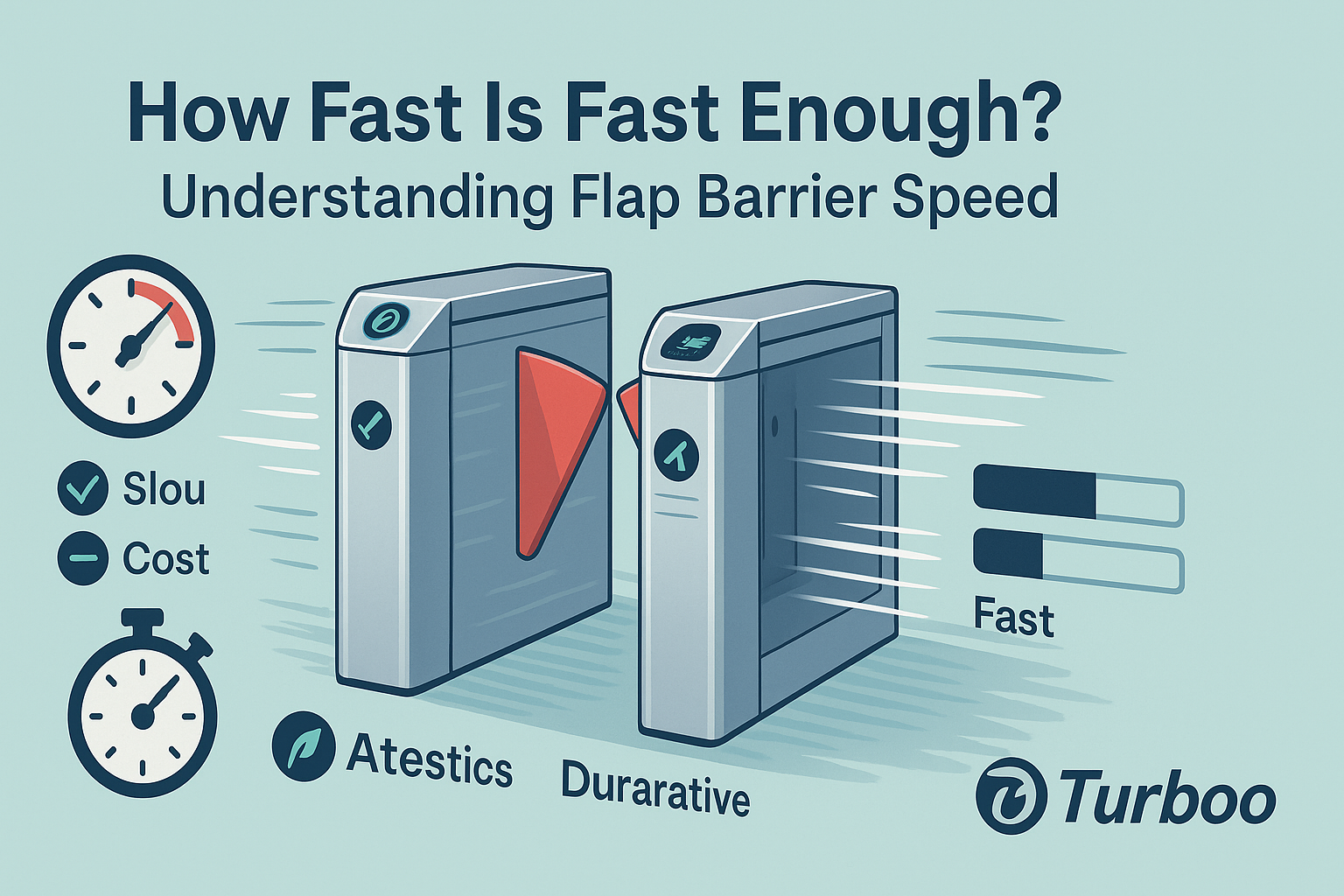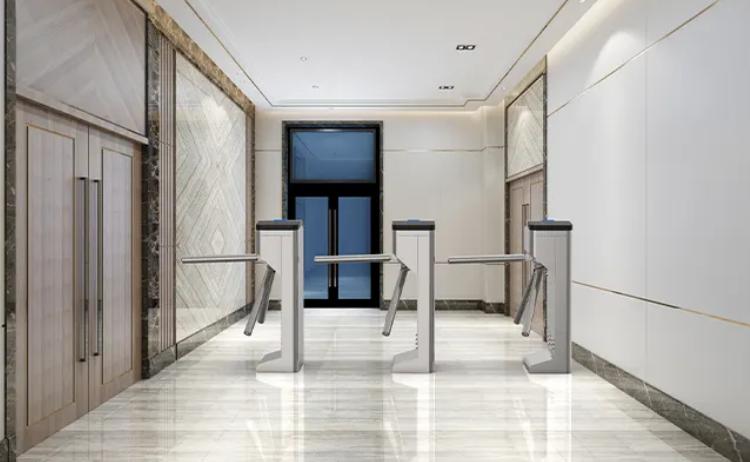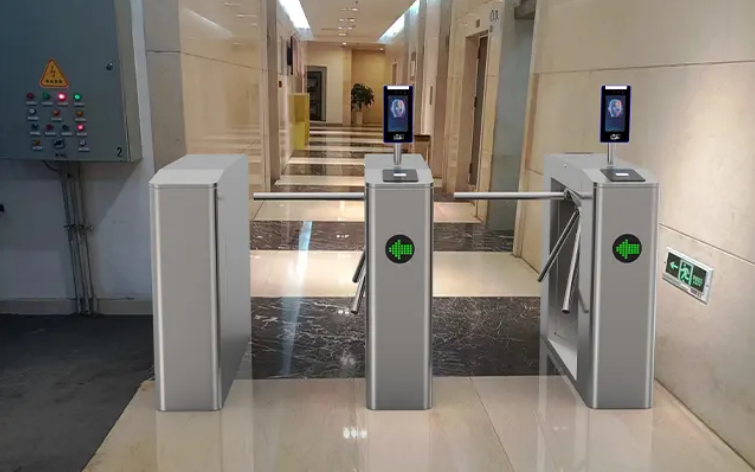How Fast Is Fast Enough? Understanding Flap Barrier Speed


Speed is a defining feature in every access control system. When users approach a flap barrier, they expect it to respond instantly. A delay of even one second can feel like a disruption. A smooth, rapid response helps maintain flow and ensures people get to their destination without frustration.
But flap barrier speed does more than improve convenience. It also plays a critical role in managing security. In high-traffic facilities like airports, schools, or corporate campuses, access control speed must match the pace of daily operations. If it doesn’t, you create queues, confusion, and pressure points that increase the risk of unauthorized access.
Understanding the performance metrics around barrier speed is essential. When buyers choose based on accurate speed metrics, they select a product that aligns with both user flow and safety. Whether the priority is throughput, silent operation, or safe pedestrian handling, flap barrier speed must support those goals.
In this article, we’ll break down how speed is measured, what typical values look like, and how they affect real-world performance. We’ll also look at safety, features, and how speed connects to barrier specifications. By the end, you’ll know exactly how fast is fast enough for your unique environment.
Measuring Flap Barrier Speed
Flap barrier speed is a measure of how quickly the barrier opens and closes. This is known as the operating speed, and it’s usually expressed in seconds. Most manufacturers define this as the time taken from the moment access is granted to the full open or full close position.
This timing might seem trivial, but it affects the entire operation of the system. A flap barrier that opens in 0.3 seconds versus one that takes 1 second has a massive impact on throughput. Multiply this by hundreds or thousands of users per hour, and the difference becomes critical.
The actual measurement method can vary. Some manufacturers include the reaction time from the card or biometric reader. Others only measure the mechanical motion of the flaps. That’s why it’s important to ask for detailed performance metrics and real-world test data when comparing models.
Speed testing is done under load and in idle conditions. Barriers are operated repeatedly in lab settings and field installations to get average values. Leading manufacturers also test with various user types, from fast-moving employees to people carrying bags or pushing trolleys.
You can find more details on how performance is benchmarked in this flap barrier performance resource, which outlines how barriers are evaluated across different functions, including speed and motor responsiveness.
Typical Flap Barrier Speed Ranges
In today’s access control market, most high-quality flap barriers operate with opening and closing speeds ranging from 0.3 to 0.8 seconds. This range offers a balance between fast throughput and safe operation. Entry-level barriers may take closer to 1 second to complete a full cycle, while advanced models with brushless motors often operate faster.
Barriers designed for high-volume areas—like transit stations—tend to operate at the lower end of this range. They prioritize speed to avoid delays. In contrast, barriers in quiet office buildings or healthcare environments may trade speed for smoother, quieter motion.
Speed also varies based on the motor type. Brushless DC motors typically allow for faster, more controlled motion. They accelerate quickly but smoothly, helping achieve higher operating speeds without compromising safety or stability. Servo motors are another common choice, known for precision and adjustable acceleration curves.
To see how different models stack up in terms of opening and closing speeds, the best place to start is the flap barrier specifications guide. It provides clear data on motor behavior, cycle times, and how those figures relate to access needs.
Understanding these ranges allows buyers to set realistic expectations. If you’re managing a high-security area, for instance, ultra-fast opening may not be ideal. But in public transport, speed is critical. Matching your use case to the appropriate range is key.
Throughput and User Flow Impact
Flap barrier speed directly affects throughput. In access control, throughput refers to how many people can pass through the barrier in a given time—usually measured per minute. Faster flap barriers mean more people move through, which reduces queue buildup and entry congestion.
Let’s take a typical example. A barrier with a 0.4-second opening and closing speed can potentially process 40–50 users per minute, depending on reader speed and user behavior. If the speed drops to 1 second, that number can fall to around 25 users per minute. For a site with 1,000 employees arriving in a short time frame, that difference is huge.
This is especially critical in places like subways, stadiums, or business centers. These environments rely on fluid motion. If the flap barrier speed is too slow, bottlenecks form. These not only delay people but also create frustration and risk. Users may try to push through or jump over the barrier—defeating the system entirely.
At the same time, speed must be supported by smart timing and sensors. A barrier that opens fast but doesn’t detect people accurately may close too early or stay open too long, reducing efficiency.
To assess if a barrier meets your flow needs, always cross-reference speed data with user capacity numbers. The flap barrier functions overview explains how access methods, sensor types, and logic controllers influence user flow.
Throughput is more than just a metric—it’s a real-world impact. It determines whether people experience your facility as efficient or frustrating. Choosing the right flap barrier speed ensures a smooth, secure experience for everyone.
Safety Considerations and Speed
With increased speed comes increased responsibility. A fast-moving flap barrier needs safeguards to prevent injury or damage. That’s why safety is directly tied to speed. If a flap moves too quickly and someone hesitates or trips, there’s potential for a pinch or bump. In high-traffic environments, these risks must be addressed.
Modern barriers include anti-pinch sensors and infrared detection systems. These sensors stop or reverse the flap if something is detected in its path. Faster barriers typically include more sensors or smarter logic to manage these risks. The key is to balance speed with real-time monitoring.
Reaction time matters. A barrier that opens in 0.4 seconds but takes 0.8 seconds to respond to an obstruction defeats its own purpose. That’s why sensor integration and motor control need to work in sync. Good systems calibrate speed to respond quickly but safely.
Some barriers also adjust speed based on context. For example, during emergency evacuation, flaps may open slower or remain open longer to allow safe mass exit. These are smart design choices that combine safety and speed effectively.
Fast doesn’t mean reckless. It means intelligent, responsive, and smooth. The right flap barrier speed is always paired with the right safety technology. This ensures that access control is not only efficient but also secure and injury-free.
Features That Influence Flap Barrier Speed
Flap barrier speed isn’t just about the motor. It’s influenced by a combination of internal systems that work together to create fast, smooth motion. These systems include motor technology, sensor coordination, and software-based control features that regulate how quickly the flaps open and close.
One major factor is the motor technology used. Brushless DC motors and servo motors are the most common types found in modern flap barriers. Brushless motors offer quiet, reliable, and high-speed operation with less wear over time. Servo motors provide exceptional precision and are used in applications where controlled acceleration and deceleration are required.
Another important feature is the integration of smart sensors. These sensors monitor user movement and adjust flap operation in real-time. For instance, if a user steps into the lane a fraction of a second slower than usual, the barrier can delay closing slightly to prevent contact. This fine-tuned responsiveness helps maintain safety without slowing down throughput.
Software adjustments also play a significant role. Many barriers come with customizable speed settings. Security teams can adjust the opening and closing speeds based on location, time of day, or crowd behavior. During high-traffic hours, the system might operate at peak speed. During quieter times, it might shift to a smoother, slower mode to enhance safety or reduce motor stress.
Advanced models even include predictive movement systems that learn user behavior over time. These systems analyze how fast people typically move through the barrier and adjust motion patterns accordingly, improving both speed and efficiency.
Each of these performance factors contributes to the overall access control speed. Faster operation doesn’t come from just one feature—it’s the result of many components working in harmony. When evaluating products, look for features that support smart, safe speed regulation. This ensures you’re not just getting a fast barrier—you’re getting a smart one.
Trade-Offs Between Speed and Reliability
Flap barrier speed can boost user flow and satisfaction—but only if it doesn’t compromise system reliability. The faster a barrier moves, the more stress it places on internal components. That’s why it’s critical to understand the trade-offs between speed and durability.
Faster barriers require stronger motors and more precise control mechanisms. If these aren’t properly designed, the parts can wear out quickly. Bearings may degrade, flaps may misalign, and sensors may become uncalibrated. These issues lead to more downtime and higher maintenance costs.
Manufacturers who prioritize high-speed performance must also reinforce their hardware. This includes using industrial-grade motors, self-lubricating components, and shock-absorbing materials to prevent fatigue from repetitive motion. Without these reinforcements, fast operation becomes a liability rather than a benefit.
There’s also a balance between performance and longevity. A barrier that opens in 0.3 seconds might work perfectly in a transit hub—but in a quieter office setting, such speed may be unnecessary and could reduce lifespan. Choosing a barrier with adjustable speed settings gives you flexibility. You can operate it slower to extend motor life during low-traffic hours and switch to faster operation when needed.
Reliability is about consistent performance over time. If a barrier breaks down frequently due to excessive speed, it disrupts access, reduces trust, and increases total cost of ownership. That’s why speed must always be paired with reliability safeguards.
When comparing products, always ask about cycle testing—how many open-close cycles the barrier is rated for under normal use. This tells you how well the product handles long-term operation at different speeds. In access control, durability and performance must always go hand in hand.
Choosing the Right Speed for Your Environment
The ideal flap barrier speed depends on where and how it’s used. High-speed entry might be critical in some places but overkill in others. Matching the speed to your specific environment ensures the system is effective, safe, and cost-efficient.
In high-traffic environments like metro stations, stadiums, or large office towers, faster flap barriers help prevent long queues. They keep people moving and reduce the chance of tailgating or unauthorized access. A barrier that opens in 0.3 to 0.4 seconds is well-suited for this use.
In medium-traffic areas like corporate offices, government buildings, or schools, balance is key. You want good flow, but extreme speed isn’t required. A barrier operating around 0.5 to 0.6 seconds usually works best, providing comfort without sacrificing pace.
For low-traffic environments, such as libraries, labs, or secure back-office entrances, speed matters less. These areas prioritize silent operation, safety, and visual design. Here, barriers with slower but smoother motion may be preferred. They offer greater control and longer service life.
Also, consider who will use the barrier. If it’s serving people with limited mobility, slower speeds might be safer. In contrast, a barrier near a parking garage entrance might need a fast-reacting system to handle rush hour.
Understanding your environment and its user profile helps define the speed requirements. The goal is to find a flap barrier speed that supports natural movement, avoids delays, and doesn’t create unnecessary wear.
Flap Barrier Speed in Specifications
When evaluating flap barrier models, one of the most telling details is found in the product specifications. Flap barrier speed is usually listed in seconds, detailing both opening and closing times. But not all spec sheets are created equal—knowing how to read and verify these numbers makes all the difference.
Some vendors only list the average opening speed, ignoring variables like user detection time or system processing delays. Others include ideal conditions that don’t reflect real-world use. That’s why it’s important to ask for tested performance metrics, not just catalog figures.
Reliable manufacturers will provide verified speed ratings measured under both lab and live conditions. This includes opening speed, closing speed, response time, and sometimes cycle duration (the complete open-close-reopen process). These numbers show you how the barrier handles continuous traffic without overheating or slowing down.
For a comprehensive overview of what else to look for in technical documentation, the flap barrier specifications guide outlines speed benchmarks along with dimensional, electrical, and mechanical data points.
Speed in Overall Barrier Performance
Speed isn’t an isolated feature—it contributes to the entire access control experience. It influences how smoothly people move through, how well the system prevents breaches, and how the barrier responds to emergencies or peak-hour surges. That’s why speed must be seen as part of overall barrier performance.
In high-functioning systems, speed supports multiple functions at once. For example, a barrier that opens in 0.3 seconds also has to accurately verify credentials, detect unauthorized movement, and avoid physical contact—all in real-time. If the speed outpaces the system’s ability to process these events, the risk of failure increases.
The best flap barriers use speed as a functional tool, not just a spec to brag about. They integrate fast motor operation with smart sensors, real-time analytics, and flexible logic controllers. Together, these elements allow the barrier to perform at peak levels without compromising safety or security.
If you want to see how flap barrier speed integrates with broader system performance, check the flap barrier performance. It outlines how speed plays into diagnostics, remote control options, and multi-lane synchronization.
A fast barrier isn’t useful if it sacrifices accuracy, safety, or service life. But when it’s built into a performance-first design, speed becomes a major asset.
Comparing Models Based on Speed
Speed is often the deciding factor when comparing flap barrier models—especially in environments where traffic load or time efficiency is a concern. That’s why comparing models based on their opening and closing speed, along with total throughput, is essential for choosing the right system.
Start by using performance charts or comparison tables from trusted vendors. These will show how different models operate under similar conditions. Key categories to compare include:
- Opening speed (in seconds)
- User capacity per minute
- Sensor count and reaction time
- Cycle testing results (durability under constant use)
Higher-end models usually list full testing data, including field use cases and operational benchmarks. Look for consistency in these numbers. If a barrier boasts fast speed but lacks cycle data, that’s a red flag for long-term reliability.
Some models also categorize their use suitability—for example, “designed for high-volume transportation” versus “optimized for quiet office flow.” These tags can help you find systems that deliver the right balance of speed and function.
Remember that speed should not be considered in isolation. It’s one part of a broader decision-making process that includes durability, integration, safety, and cost. But when reviewed carefully, it can be a strong indicator of how well the barrier will perform in your space.
Installation, Setup, and Speed Calibration
Even the fastest flap barrier needs proper setup to perform at its best. During installation, speed calibration is critical. This ensures that the barrier opens and closes at the right rate for your specific location and user group.
Installers use control software or built-in menus to adjust motion speed, delay timers, and flap behavior. For instance, you might set faster speeds during peak entry times and slower speeds at night. Some systems even allow automatic speed modulation based on traffic density or user detection.
The environment also affects calibration. On uneven floors or near sensitive equipment, slower speeds may be safer. If the barrier is near elevators or entry doors, speed may need to align with external access schedules.
Proper calibration also prevents system strain. Motors working too fast or at inconsistent rates can overheat or wear down prematurely. A well-tuned barrier balances performance and longevity.
Speed calibration isn’t a one-time task. It should be revisited during routine maintenance or after significant usage changes. That way, your system stays optimized for both flow and safety.
Speed and Regulatory Compliance
While many focus on speed for convenience, compliance standards also govern how fast barriers can legally operate—especially in public or safety-sensitive environments.
Regulatory bodies often set minimum and maximum operation times for flap barriers. These guidelines ensure that barriers don’t create hazards by closing too quickly or remaining open too long. Safety codes, including those related to accessibility, fire evacuation, and emergency egress, all have timing requirements.
In some regions, local laws also require a delay period before the flaps close, allowing time for slower individuals to pass through safely. This affects how fast a system can operate without violating accessibility standards.
To stay compliant, manufacturers align their product features with international safety norms, such as ISO and ANSI standards. You can learn more about these timing-related rules from access control resources like HID Global and Security Magazine’s speed metrics.
Following these standards ensures legal use and supports smoother facility inspections or audits. Always ask your vendor if the flap barrier model you’re considering complies with local access control speed regulations.
Flap Barrier Speed: Key Points to Remember
- Flap barrier speed is measured in seconds for opening and closing. Fast systems operate between 0.3–0.6 seconds.
- Speed affects throughput, influencing how many users can pass per minute—vital for high-traffic locations.
- Sensor and motor technology greatly influence safe speed. Look for systems with real-time detection and precision control.
- Faster isn’t always better. Excessive speed can cause component wear or increase safety risks if not properly managed.
- Speed must align with your environment. Use fast models in public spaces, slower settings in quiet or accessibility-sensitive zones.
- Check specs carefully. Ask for tested metrics and ensure compliance with access control speed regulations.
- Speed is part of overall performance, impacting security, safety, and user satisfaction.
Conclusion: Making Smart Speed-Based Decisions
Flap barrier speed is more than a number. It’s a performance metric that touches every aspect of access control—flow, safety, reliability, and even compliance. When chosen carefully and calibrated correctly, the right speed turns your barrier into a seamless part of your facility’s movement system.
By understanding what affects speed, how it’s measured, and what trade-offs exist, you can make informed decisions. Whether you’re managing a metro station or a medical clinic, choosing a flap barrier with the right operating speed means smoother entries, fewer issues, and a better user experience.
Before you buy, consider your users, traffic flow, and compliance needs. Match the barrier’s speed to your reality—not just what looks good on paper. A smart decision today leads to smoother operations for years to come.












